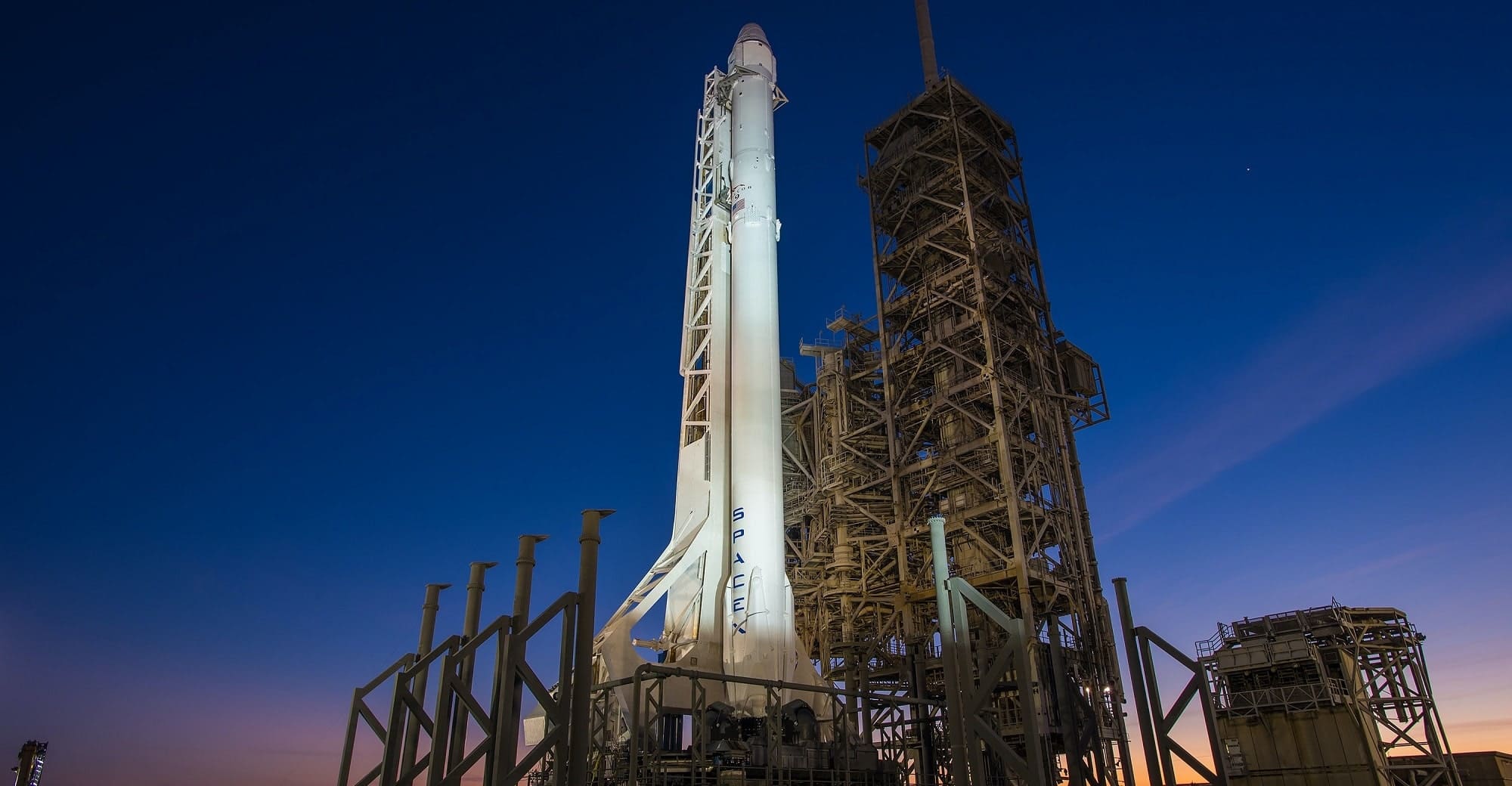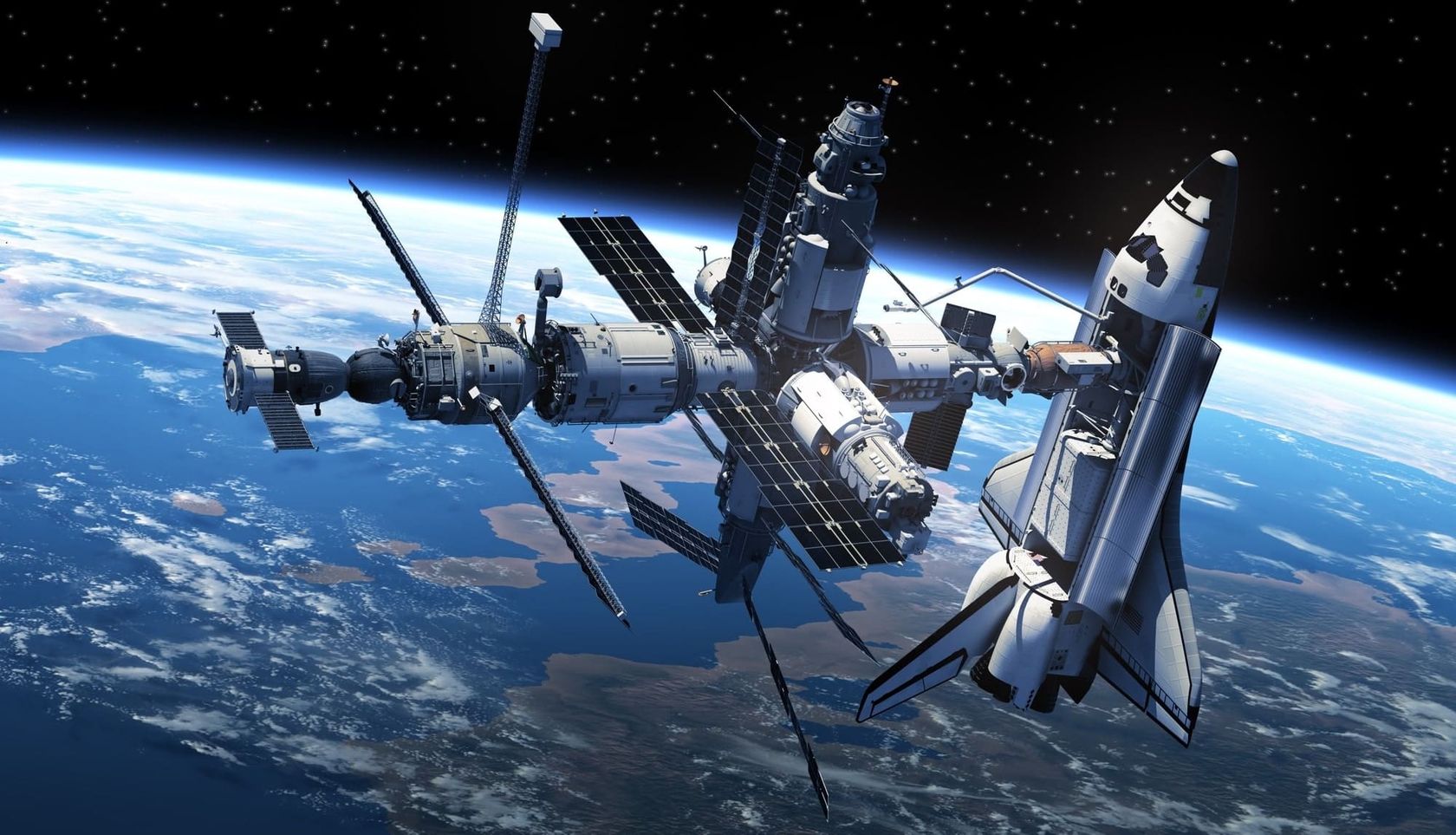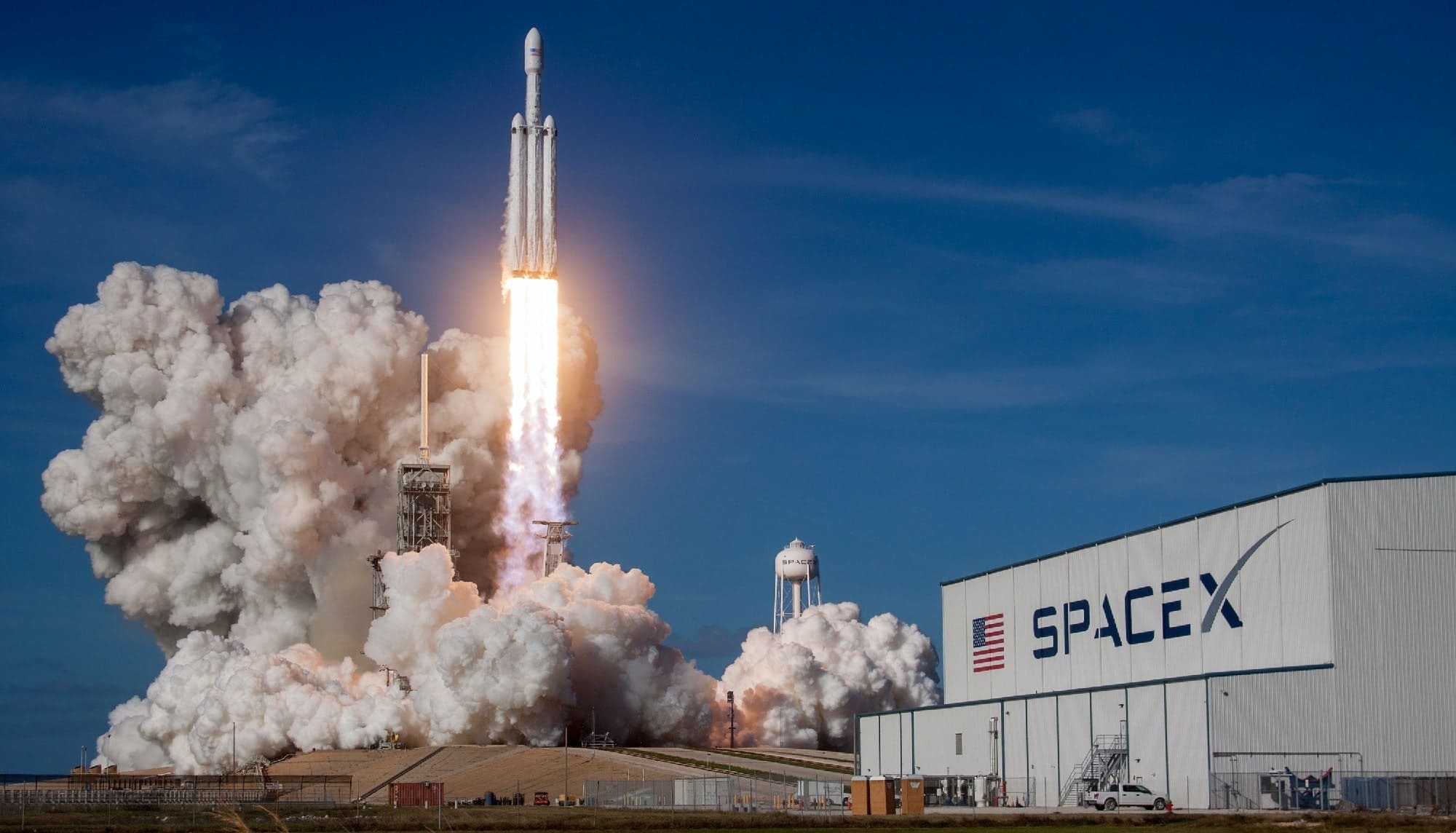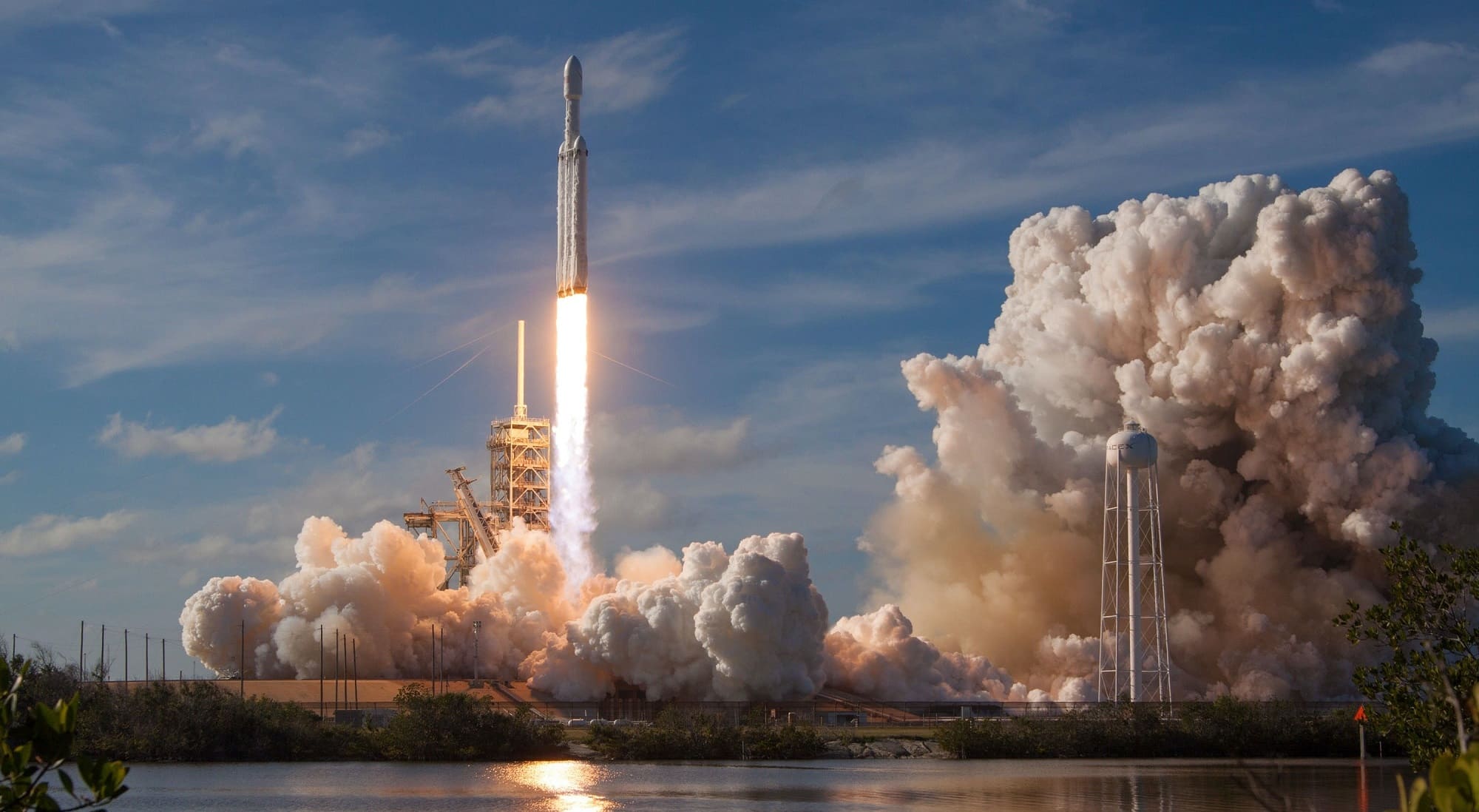The American businessman is known not only for Tesla electric vehicles but also for founding the company SpaceX, which has been working on space programmes, designing launch vehicles and planning to land the first human on Mars since 2002. Zenits are manufactured at the Yuzhmash plant in Dnipro which is, among other things, a steel-making city. Modern rockets are built out of various materials and steel is one of the materials used in space.
First developments in space technology
The origin of the modern aerospace industry dates back to the late 1930s. German scientists and businessmen were among the first to design and manufacture liquid-propellant rockets. Germany's adversaries recognised the potential of this military technology that could hit targets at a distance of 200-250 kilometres. They realised that the invention of German scientists could serve a greater cause. In the mid-1940s, the USSR, the US and UK competed to get their hands on one of the secrets of Nazi Germany: the plans and experts who were engaged in the design of the V-2 rocket. German designer Wernher Von Braun decided to move to the US. He moved to another continent along with all of his remaining specimens of rockets, which became the base of the American space programme. The Soviet Union was not as lucky. The country ended up with only individual parts and elements of structures. Led by Serhiy Korolyov, who was born in Zhytomyr, Soviet designers painstakingly rebuilt the V-2 and enhanced it, creating their own R-1 rocket. The rocket was first launched in October 1948.
The Soviet rocket was noticeably different from the German prototype due to design capabilities, working conditions and availability of materials. The German rocket was built at the height of the war. They even had to use alcohol as a propellant, as the country was fighting on two fronts and did not have enough oil.
As a result, the R-1 rocket contained a somewhat different set of materials, including metals. Some 87 grades and types of steel and 59 non-ferrous metals were used for the V-2, versus 32 and 21 used, respectively, in the Soviet rocket. Fuel and oxidiser tanks, for example, were made of an aluminium and magnesium alloy. The rocket body containing all of its main components was built out of steel plates.
It is notable that it was Yuzhmash that took over the production of the successors to the V-2 rocket. These were the first attempts to use steel in space technology.
What metals are used in rockets

Various metals form the backbone of modern space vehicles. Aluminium, the aircraft metal, migrated from aviation to rocket construction. However, it transpired that its properties did not fully meet the needs of the designers. Although it was light and ductile, it was not robust enough. Therefore, duralumin (also called duraluminum), developed in Germany at the beginning of the 20th century, is more commonly used. This alloy or, to be more precise, this group of alloys, contains not only aluminium but also a fair amount of copper and manganese, which make it stronger and harder. However, this material has low weldability. Duraluminum parts are typically riveted or bolted, which does ensure tightness. As such, duralumin is used in so-called ‘dry’ rocket compartments.
Aluminium alloys with magnesium content (up to 6%) that are deformable and weldable are more commonly used in the aerospace industry. The body of the world's first artificial satellite, the very same ball that was successfully placed in orbit around the Earth in October 1957, was made of a similar alloy. The tanks of the R-7 two-stage ballistic missile that became the first Soviet launch vehicle were also made of the aluminium-magnesium alloy.
The space race between the Soviet Union and the US resulted in the development and emergence of many more robust aluminium-based alloys containing up to ten constituents. Aluminium and lithium alloys proved the strongest and most lightweight, though.
Although the ‘aircraft metal’ alloys remain the number one in terms of the volumes used in space technology, steel is an indispensable material for the aerospace industry today, as it has been in the past. After the beginning of production of multi-stage rockets, the use of a design with single-piece steel bodies, like the one the V-2, came to an end. However, space steel still exists: these are various grades of stainless steel.
This metal is superior to aluminium alloys in terms of hardness. Stainless steel structures, which must withstand space loads without deformation, have proved more compact and lightweight. Furthermore, steel, even the most exotic grades, is cheaper.

Nowadays, propellant tanks are built out of stainless steel. It should be pointed out that these huge structures are have very thin walls. For example, the American Centaur booster has a wall thickness of 0.51 millimetres. For this structure, measuring 12.68 metres high and 3.05 metres in diameter, not to collapse under its own weight, its shape is maintained by artificially creating internal pressure. It is virtually inflated like an air balloon.
The third most common metal that is used in rockets is copper. It is heavy and expensive, but it has fantastic thermal conductivity. As such, the inner wall of the rocket engine is made of copper alloys (typically, chromium copper). It can withstand the heat of 3,000°C that bursts out of nozzles during the launch.
Other noteworthy metals used in rockets are titanium and silver. They are important from a technology standpoint, but the volumes used are insignificant. When placing a spaceship into orbit, every kilogramme counts, and the unit weight of titanium is 1.6 times higher than that of aluminium. Furthermore, titanium metal and its alloys, just like silver, are much more expensive than steel and aluminium alloys.

Outlook for steel in rocket construction
In today's world, it is not uncommon that metals and alloys (in particular, steel) are replaced by glass and carbon fibre. The space industry is no exception. One example is the bodies of American reusable space shuttles, which had a thermal protection system built out of seven different fibre and ceramic materials.
Another innovation is the use of big 3D printers, which can create single-piece, complex-shape elements for spaceships. Some private space companies place an emphasis on this option. It is noteworthy, though, that the materials used include various metal alloys. The new technology makes it possible to avoid welding, bending, and other operations, which, as we know, are impossible for some light metals.
What does Elon Musk think about the future of space exploration? Can steel be used for spacecraft?

At the end of 2018, he told in an interviewer that the Starship super-heavy launch vehicle, capable of delivering cargo to the Moon and Mars, would be build out of stainless steel. It is easier, cheaper, and faster.
According to Musk, one kilogramme of carbon fibre costs US$135.With rejects in mind, it can cost as much as US$200. Moreover, a lot of it will be needed. In contrast, one kilogramme of steel costs around US$3 lars. There is no shortage of steel, since there are plenty of producers of stainless steel plates around the world. Special alloys that stand up well to temperature drops have been developed and tested. They are resistant to external factors and not prone to micro-cracking, which can lead to breakdowns and failures. The stainless steel containing the added chromium and nickel is good at handling the ultra-low temperatures of the propellant.
Elon Musk is confident that the modern metallurgical technologies will help him cope with the tasks at hand. The AISI 301 high-strength non-magnetic steel with chrome-nickel content will help him with this.
After research, millions of dollars-worth of equipment for the manufacture of rocket bodies out of carbon fibre, which was the original material of choice, was dismantled at Musk's manufacturing facility in March 2019. During the presentation of a full-size prototype of SpaceX's Starship on 29 September 2019, Musk said that, thanks to the use of steel, SpaceX would spend just US$10 million on materials for one rocket, instead of US$400-500 millions. And these spaceships will be reusable.
So, steel will remain a key material for the space industry for a long time to come.
